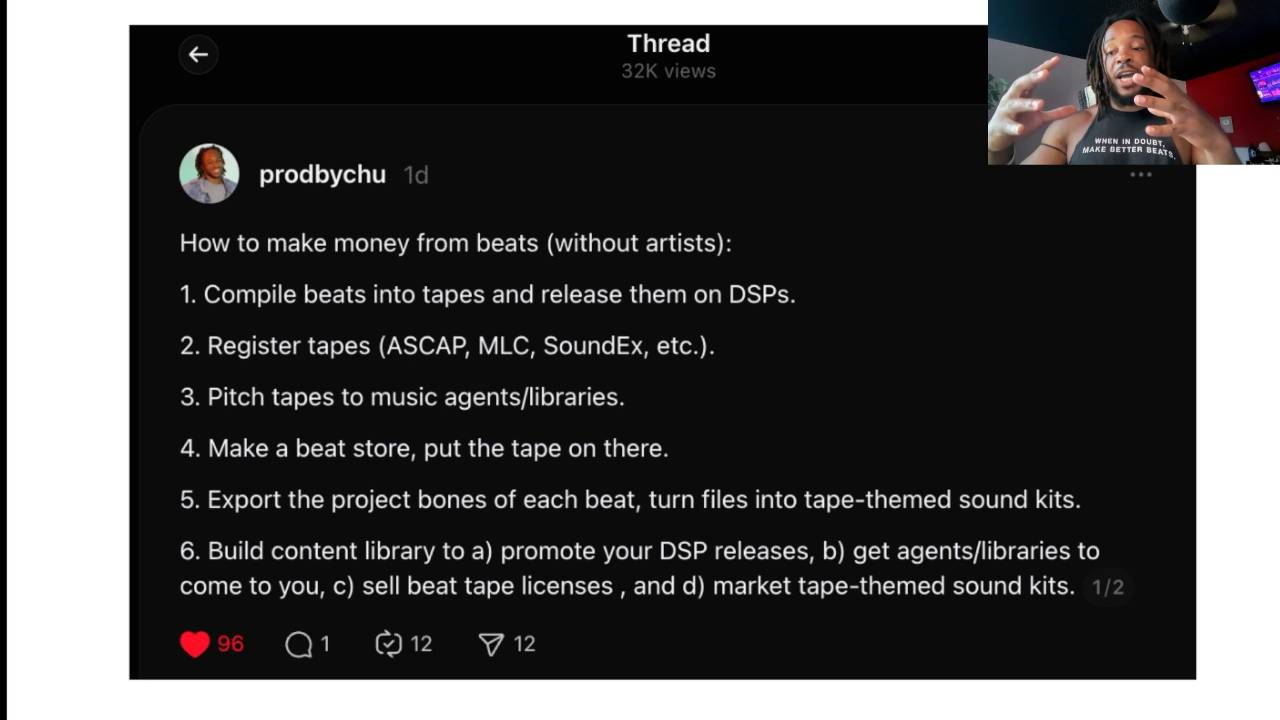
I won't lie to you, pretty much every video on YT talking about Portal is 🐶💩.
I tried to find a better way to express my frustration with the knowledge gap, but I just have to be honest about it.
That's why I'm working on a few new essays, one of which is all about Portal (don't worry, I'll talk about free alternatives too).
If you really want to know how Portal and granular FX work, you should read the manual.
BUT...
That's A LOT of reading.
And even if you do it, it's full of a bunch of words that are hard to understand.
Let me briefly and simply explain every single aspect of Portal right now; then we can use this letter for context when we discuss how to apply it later.
Btw - you can read yesterdays letter for a short primer on what granular synthesis even is.
The XY controls are just master knobs that you can link to control every other FX in portal (this doesn't actually make any FX - it just controls amount).
You can also control the macro knobs by changing the position of the circle inside of the portal.

Grain Controls chop incoming audio so you can do trippy stuff to it (this is the main purpose of granular FX & synthesis).
Here's a list of simple explanations for each grain control 👇
- Density --> controls how many times your selected grain plays back.
- Offset --> shifts the start point of your grain [ex. instead of the grain coming from the transient of the guitar pluck, you can offset it to the tail end release of the sound].
- Offset Ratio Lock —> creates a ratio relationship between density and offset, it's just a parameter inking function [a bit confusing in theory, very cool in practice]
- Size --> how much audio Portal takes from your sample to make a grain.
- Grain size ratio lock --> creates a ratio relationship between grain size and offset; again, just a parameter linking function.
- Count --> controls the number of grains Portal generates at once.
- Pitch --> changes the pitch of the grains Portal creates.
- Scale --> this allows you to key quantize the pitch parameter [basically, you can easily make sure you're never out of key].
- Pan --> Alternates (or modulates) the panning of each new grain produced [it's just a panning control].
- Wet/Dry --> 1 of 4 wet FX controls in Portal; this one controls the mix of all tweaks happening in the grain controls and BEFORE the FX console.
Stretch warps the length of grains, and the re-trigger is kind of like a tempo sync control for that.
Okay, so remember in the stereo shaping letter how we talked about every FX basically being Delay? 😅
The grain delay is kind of like a feedback FX, and the 'time' parameter is what controls the feedback-clock (& 'time-sync' locks that to the tempo of your project).

'Feedback' controls the amount of loudness on the delays which can be filtered (EQ'd) using the HP (high pass) and LP (low pass).
The next section is the LFOs.
If you're an audio nerd, you already know how insane it is that Portal has TWO of these.
If you're new though, an LFO (low frequency oscillator) is just a tool that automates movement in a sound to create the feeling of vibration.
This automated movement is referred to as modulation.
Portals LFOs have a bunch of parameters, but here's a simple breakdown of each;
- Rate controls how fast your audio gets passed through the LFO.
- Sync links the movement of your LFO to tempo or frequency (pretty cool).
- Humanize adds little tweaks to your LFO shape to make its movement feel more natural (and less jarring).
- Random creates a random LFO shape (LFO shapes are referred to as envelopes).
- Clear gets rid of your current LFO shape.
- Save saves your envelope shape for later use.
- Load is where you can recall envelopes you have saved as presets.
The LFO can be linked to grain controls to create all sorts of unique movements in your audio.
The FX console in Portal is pretty straight forward. 
These come after the granulator FX but before your master wet/dry slider.
There are two FX inserts, each of which with wet/dry control.
And you have 7 FX you can choose from;
- Bit Reducer
- Chorus
- Distortion
- Filter
- Phaser
- Reverb
- Stereo Delay
Portal also has a master panel made up of an equalizer and a compressor. 
In terms of signal flow, this master chain comes after the granulization AND after the FX, but BEFORE the console wet/dry.
The console wet/dry controls the total amount of portal FX that is applied to your audio.
So once you've actually set the portal preset, then this controls the wet/dry of that finished FX.
As you can see, Portal puts A LOT of power in your hands to make amazing and unique music.
But as Ye said on Dark Fantasy, "no one man should have all this power..."
UNLESS...
He knows how to use it 😈.
Be on the look out for that Portal video essay/newsletter.
I think you'll enjoy it very much.
Want to share this DOPE Letter with a friend? Just copy and paste this link on text, email, or social media 👇
www.dopecontentonly.net/blog/i-read-the-portal-manual-for-you
Blessings
Chu
Centerfold; The best-selling sound kit bundle (25,000+ owners).
The DOPE Newsletter; over 13,000 subscribers.
Ps. When in doubt, make better beats #DOPECONTENTONLY
Get Sound Kits 👇





